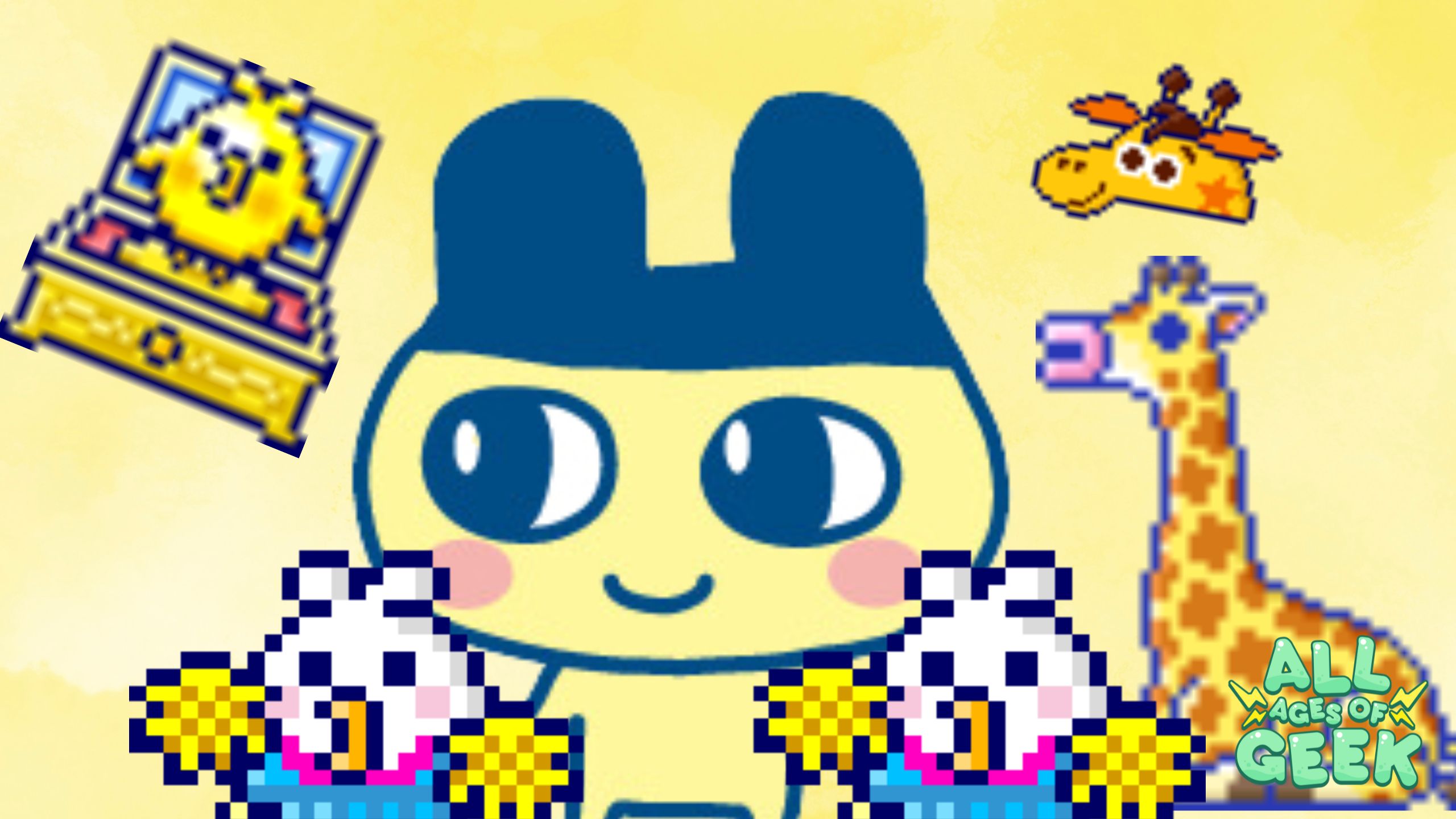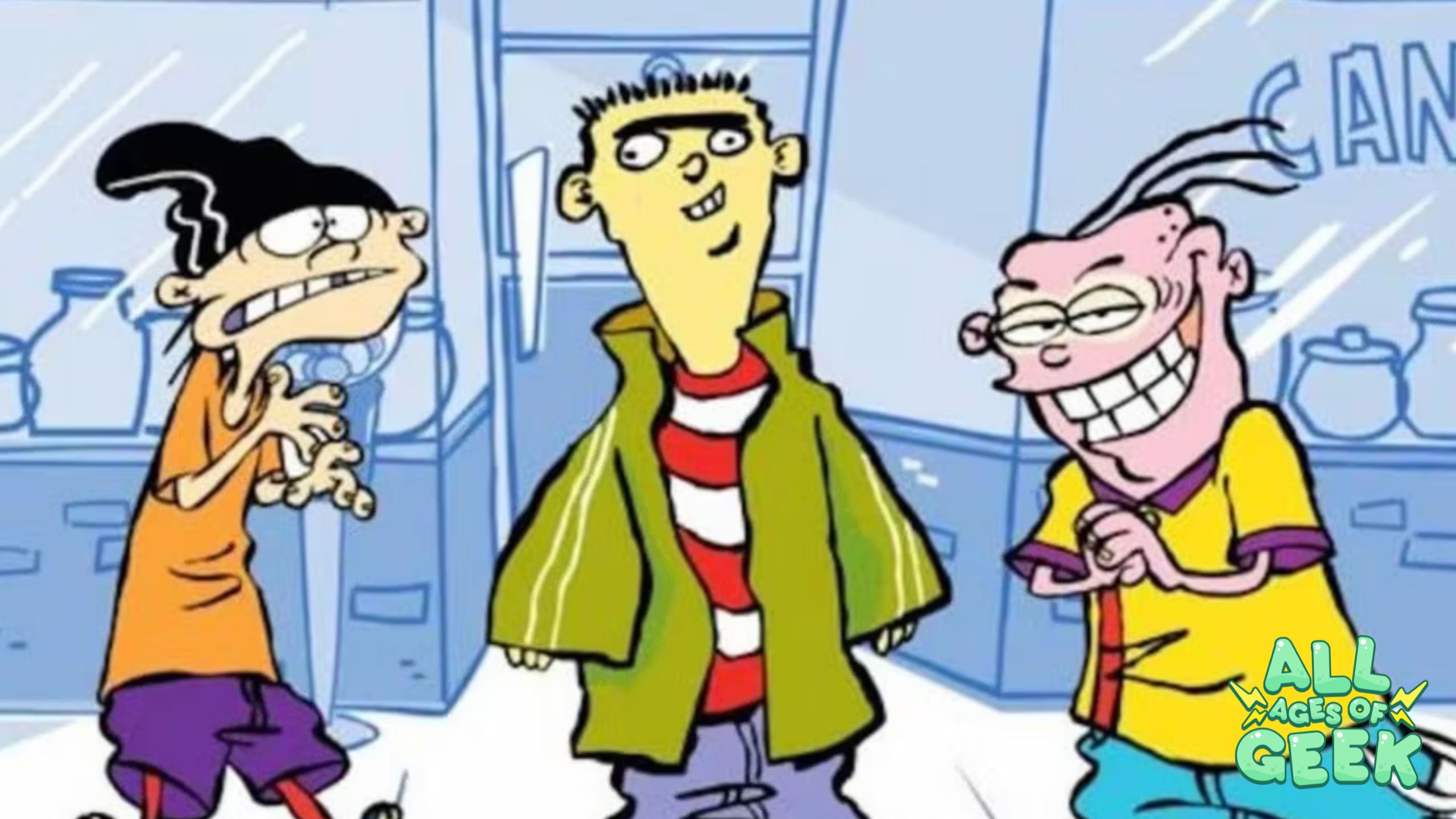If there was one show that I immediately fell in love with, it is RWBY. What can I say about it that people have not already said? The characters, the theories, the ships, and more. It is an all you can eat buffet of potential to get into, with dessert. I love the lore of the world of Remnant as much as the next person, but one thing that gets me thinking is, ironically, the one thing without a mind of their own. The Grimm. Now, Rooster Teeth did a great job explaining what Grimm are, and that is not what I am talking about. I am talking about the culture behind the Grimm, and the references, or possible references, to said culture.
One of the first Grimm we witness is the Beowolf. Beowolves are wolf like Grimm that are pack hunters. Fitting that the first time we see them in the Red Trailer since Ruby is based on Little Red Riding Hood. Now, their name is also the title of an Old English epic, Beowulf. Beowulf was simply the story of an awesome hero killing monsters and looking cool doing it. Seriously! The first monster we see him kill in his story killed a lot of people in a mead hall several times, and Beowulf fights it barehanded because he wants to make it fair!
The second Grimm we see is in the White Trailer, which Weiss fights is called an Arma Gigas. This is where things get a bit complicated. What it is comes down to two things. In the RWBY Anthology manga, they (the author) says it is a suit of armor that is filled with multiple Grimm. However, there is a Grimm called a Geist. Geists, when they possess inanimate objects that are large, it as Gigas at the end of its name. More on Geists later. Now Gigas, as a term has roots in Greece. Gigas is Greek for giant. So Arma Gigas means weapon giant, fitting that it was wielding a giant sword.
The third Grimm we see is the Ursa Minor. We see this in Volume 1, Chapter 6: The Emerald Forest. The Ursa Minor is a reference to the constellation of the same name, which means Little Bear. We see them in a fight scene when Yang fights three of them. This is fitting since Yang is based on Goldilocks, and she fights three of them. Goldilocks and the Three Bears, but Goldilocks is a lot more violent.
The fourth Grimm we see is the King Taijitu. We see this one in Volume 1, Chapter 6: The Emerald Forest as well. The King Taijitu is a two headed snake, one-half black and one-half white. This is a reference to the term Taijitu, which is what the Yin and Yang symbol is called. It is also based on the Amphisbaena, a two headed snake in Greek mythology.
The fifth Grimm we see is a giant Death Stalker. Now the Death Stalker we see in Volume 1, Chapter 7: The Emerald Forest Part 2 is not the average size Death Stalker. Death Stalker, much like their real-life counterpart of the same name, are scorpions. They have pincers, a stinger that is full of poison and can burrow underground. Now unlike their real-life counterpart their stinger can glow much like an anglerfish, which Jaune fell for.
The sixth Grimm we see a Nevermore. The Nevermore can be as large as Remnant’s airships and have the ability to fire off its feathers, as seen in their first full appearance in Volume 1, Chapter 8: Players and Pieces. Now, the Nevermore gets its name from the Edgar Allan Poe poem The Raven, specifically from the line “Quoth the Raven ‘Nevermore.’” The Nevermore is also based on the Stymphalian Birds which were made of metal, man-eating, and could also launch its feathers
The seventh Grimm we see is the Boarbatusk. The Boarbatusk appears in Volume 1, Chapter 10: The Badge and the Burden Part 2. The Boarbatusk may not seem intimidating, been just a boar with large tusks, however its power and potential speed makes up for it. It can charge forward curled up into a ball. Now, its name comes from the Latin word ‘barbatus’, which means bearded and babirusa, which is a type of boar which is known for its tusks
The eighth Grimm is related to another one I mentioned. This is the Ursa Major. Seen in Volume 1, Chapter 14: Forever Fall Part 2. This is the Ursa Minor’s bigger, meaner, and older cousin. Also named after constellation, which means Big Bear, it definitely earns that title, and is not the last “superior” version of a Grimm in the show.
The ninth Grimm we see is actually not show through a fight scene, but as an observation in Volume 2, Chapter 9: Search and Destroy. This is the Goliath, an elephant like Grimm. The Goliath gets its name from Goliath, a Philistine giant from Abrahamic religions, which was said to be nine feet (2.7 m) tall. It is also based visually on the African elephant.
The tenth Grimm is simple called Creep. Creeps are unique in this case because they are not based on anything from any culture. Seen in Volume 2, Chapter 11: No Brakes, they have parts of animals that some Grimm just lack. According to The World of RWBY: The Official Companion, Creeps are based on terror birds.
The eleventh Grimm has only been seen once. This has no official name, but people call it the Beetle Grimm, since that is what it looks like. This Grimm was in Volume 3, Chapter 7: Beginning of the End. In which it is summoned by Cinder, spews some black substance in the face of Amber (who at the time was the Fall Maiden), and has the ability drain Aura and siphon it to someone else.
The twelfth Grimm we see is the Griffon. Seen in Volume 3, Chapter 10: Battle of Beacon, these Griffons are much like mythological counterpart, are part lion and part eagle. Instead of cawing like birds, they roar like lions. There is not much more to say about them. They are exactly what you would expect from griffons.
The thirteenth Grimm we see is the bigger, stronger, and nastier version of the Beowolf, the Alpha Beowolf. Seen in Volume 3, Chapter 10: Battle of Beacon, the Alpha is just like a normal Beowolf; however, they are the leader of the Beowolf Pack. They are strong enough to shred through the state of the art Atlesian Knights. The only reason it was stopped was because of General Ironwood killed it in the Amity Colosseum.
The fourteenth Grimm we see is the Wyvern. Seen bursting out of Mountain Glenn in Volume 3, Chapter 10: Battle of Beacon. This monstrosity gets its namesake from wyverns, which are like dragons, but instead for four legs, they have two. One thing that makes this Wyvern terrifying is their ability. Along with flying, it drips black ooze that gives birth to more Grimm. Perhaps this is why Mountain Glenn fell, because more Grimm kept coming more than the Huntsmen and Huntresses could kill.
The fifteenth Grimm we see is in the RWBY video game, RWBY: Grimm Eclipse. This is the Alpha Creep. There is nothing very impressive about these stronger Creeps. In fact, that’s their most impressive thing, that they are stronger than the average Creep.
The sixteenth Grimm we also see in the RWBY video game, RWBY: Grimm Eclipse. This is the variant of the Creeps; these are the Mutant Creeps. Unlike their natural counterpart, these have green claws and green accents on them and unleash a powerful explosion upon its death. These were created by Doctor Merlot. Merlot mutated Grimm to make them even more deadly to get back at Ozpin and the people who doubted his vision. They could also be a reference to Creepers in the game Minecraft.
The seventeenth Grimm we see is another mutant in RWBY: Grimm Eclipse. If it could not get even deadlier, Merlot decided to create a Mutant Alpha Beowolves. These beasts are powerful. They have strong claws, they are fast, and they can summon crystal-like spikes a decent distance. These Grimm are not complete overkill, luckily for Team RWBY.
The eighteenth Grimm we see in Grimm Eclipse is a variant of the Death Stalker. This is the Giant Mutant Death Stalker and just like the Mutant Alpha Beowolf it is more deadly than its unmutated verity. This has the abilities of the normal Death Stalkers, burrowing, powerful pincers, and a deadly stinger. The Mutant Death Stalker has the ability to launch its poison from its tail like a volley of arrows. This is Doctor Merlot’s greatest and most powerful mutant.
The nineteenth Grimm we see does not have a have a name but Doctor Oobleck, in the RWBY manga, written by Shirow Miwa, compares it to a parasite so that it what I will call it. This Parasite Grimm looks like the head of Cthulhu and has the unique ability to fuse Grimm together. It fuses four King Taijitu into a creature called a Yamata no Orochi, more on it later. From my knowledge, this has only seen once.
The twentieth Grimm is an Orochi. This, as stated before, was the result of the Parasite Grimm fusing four King Taijitu. Now the Yamata no Orochi is part of Japanese mythology. Its name translates roughly to Giant Eight Branched Snake. The Orochi was a problem for the Izumo Province (modern day Shimane Prefecture), because it ate a girl every year. Now, this beast was defeated by Susa-no-O, but the story if its defeat is another story.
The twenty-first Grimm is the Beringel. This Grimm was first seen in the Volume 4 Character Short. This Grimm is honestly seen as more intelligent than others. In the short, it throws an Alpha Beowolf at Ruby. Its name is most likely from the scientific name of the Eastern Gorilla, Gorilla beringei.
The twenty-second Grimm is a Petra Gigas. It first appeared in Volume 4, Episode 1: The Next Step. The Petra Gigas, much like the Arma Gigas, is just a Geist possessing boulders. Petra is Greek for stone. So, its name means stone giant. Now this to me sounds like modern golems since the original golem were made from clay.
The twenty-third Grimm is the Geist. The Geist also appeared in Volume 4, Episode 1: The Next Step. Geists can possess any inanimate object, seen in the Arma Gigas and the Petra Gigas. Now, Geists get their name from a paranormal classification for a ghost: Poltergeist. The difference between a say a black shadow variety of ghost and a poltergeist is that poltergeist can interact with physical objects, like throwing a glass or pushing a chair. Much like how Geists can possess inanimate objects.
The twenty-fourth Grimm is the Sea Feilong. This Grimm is a sea dragon that breathes lightning. Its first appearance is in Volume 4, Chapter 3: Of Runaways and Stowaways. Though it lives in the sea, it does have wings that allows it to fly. Fēilóng, in Chinese, means flying dragon.
The twenty-fifth Grimm is the Nuckelavee. We see this Grimm fully in Volume 4, Chapter 11: Taking Control. This Grimm is the exact same one that killed Lie Ren’s father. This Grimm, before this episode was seen in a silhouette. What makes this Grimm interesting is that it is not just one Grimm, it is actually two Grimm: the horse and the “human’s” upper half upon the horse’s back (which is called an Imp). The Nuckelavee is based on a creature sharing the same name. It is a demon from Orcadian mythology. Orcadians are the people living on the Orkney islands of Scotland. The folklore Nuckelavee was said to be able to ruin crops in the fields, and ruin entire villages. The Nuckelavee Grimm effectively did the exact same thing in Kuroyuri.
The twenty-six Grimm we witness is the Seer. We see the Seer in Volume 5, Chapter 2: Dread in the Air. The Seer is Salem’s crystal ball and is in fact what they are based on. The Seer can best be described as a jellyfish and they can use their tentacles to attack, although they are not made for combat. We have only seen one attack and that was against Lionheart when Salem had no more use for him. Seers work as Salem’s version of a Scroll as it seems.
The twenty-seventh Grimm is the Lancers. We see them for the first time in the same episode as the Seer. Lancers are like our modern bees; however, they are much worse. Their stingers are like rope darts that can pierce metal and a handful of Lancers can rip an airship in half. The World of RWBY: The Official Companion called them “Warrior Drones”.
The twenty-eighth Grimm is bigger than the average lancer, and that is the Queen Lancer. The Queen Lancer is roughly the size of an Atlesian cargo ship. Queen Lancers, much like Queen Bees or Queen Ants produce children, so does a Queen Lancer. In Amity Arena this is the Queen Lancer’s strengths. It summons two Lancers every nine seconds, and upon its death four more Lancers appear.
The twenty-ninth Grimm is the Ravager. Ravagers are bat-like Grimm found in Amity Area and After the Fall. What makes it interesting is that this Grimm was revealed in Amity Arena before After the Fall was published. When there is only one, or at least in Amity Arena, the one cannot do much damage. However, their strength comes when there is a whole group of them. They are a literal death by a thousand cuts. They do not much damage, however they are fast. There is a culture that reveres bats, that is the Mayans. The Mayans had a deity called Camazotz. Camazotz name translates to “death bat” which would also fit the Ravagers
The thirtieth Grimm is found only in the RWBY novel, After the Fall (written by E.C. Myers). This is the Dromedon. It is a camel that spits venom at whoever it is attacking. Now, there is some folklore about camels, however it is mainly about how important they are. Like with the Kazak people who even have a folk song called “white female camel”.
The thirty-first Grimm is the Jackalope. Also found in the novel After the Fall. The jackalope is part of American folklore. It is said to be a jackrabbit with antelope horns, therefore, jackalope. The Grimm jackalope are a lot nastier than the folklore ones. They attack with their horns and their powerful hind legs.
The thirty-second Grimm is the Ziraph is from After the Fall. It is a three headed giraffe that is five stories tall and use their tongues to capture people and swallow them whole. At first glance, there may not be any culture in this one. After all, some monsters are just that, monsters. However, this bit of culture is found in its own name. Ziraph is actually a Middle English spelling of giraffe.
The thirty-third Grimm is the Blind Worm, from After the Fall. This has a few abilities, but the one that I think highlights what it is based on is its ability to spit acid. Let me introduce to you the Mongolian Death Worm (often just shortened to Death Worm). The Death Worm supposedly lives in Gobi Desert. It came to public attention thanks to the book, On the Trail of Ancient Man written by Roy Chapman Andrews in 1926. One thing the Blind Worm and the Death Worm have in common is that acidic spit I mentioned and their habitats. Team CFVY encounter it in Vacuo, a kingdom that is primarily dessert. However, the Death Worm most likely could not swallow a human whole. Stated by Andrews himself, “It is shaped like a sausage about two feet long, has no head nor leg and it is so poisonous that merely to touch it means instant death. It lives in the most desolate parts of the Gobi Desert.”
The thirty-fourth Grimm is the Manticore. First appearing in Volume 6, Chapter 1: Argus Limited. These flying atrocities are lion like Grimm, with scorpion tails and horns, can fly, and can breathe fire. It shares its name to what they are based on, the Manticore from Greek Mythology. In Greek mythology they are basically the exact same, minus the red, white, black, and yellow color scheme.
The thirty-fifth Grimm is the Sphinx. Also appearing in Volume 6, Chapter 1: Argus Limited, they share their name with what they are based on, the Sphinx. In mythology the Sphinx was said to have a lioness body and the head of a beautiful woman and would speak in riddles. Solve the riddle, you live, answer incorrectly you die. The Grimm Sphinx has none of the elegance and riddles. It will just straight up kill you. They are a winged lioness with a viper as a tail.
The thirty-sixth Grimm is the Apathy. They are first seen in Volume 6, Chapter 6: Alone in the Woods. The Apathy are not strong, they are not even fast. What they lack physically they make up for emotionally. They slowly drain all emotion both negative and all positive, until the target feels absolutely nothing. The target becomes apathetic and therefore easy to kill. In the mobile game Amity Arena, we see they have the ability to summon another one. Two Apathy can become four, four can become eight, eight can become sixteen and so on. These Grimm look like living skeletons, a walking corpse. I believe these are based on the original vampires. It is easy the associate vampires with being handsome and charming. You can thank the Twilight series and even Bela Lugosi, the actor who played Count Dracula in Universal’s Dracula in 1931. The original vampires were walking corpses that would drink the blood of unsuspecting people. They did not charm their way in, in fact they could not. They were not strong, they were not even fast, but they could drain a human body dry leaving the body as a husk. Where does that sound familiar?
The thirty-seventh Grimm is the Leviathan. It is first seen in Volume 6, Chapter 12: Seeing Red. The Leviathan is based on the creature if the same name from the Judeo-Christian faith. Both Leviathans come from the sea, however the Judeo-Christian one is more akin to a dragon rather than the Grimm one who looks like a dolphin who lives at the gym that also breathes fire.
The thirty-eighth Grimm is one we see getting created before our very eyes. In Volume 6, Chapter 13: Our Way, we see for the first time the Winged Beringel. This Grimm is based off the Winged Monkeys in The Wizard of Oz. In the movie, the Winged Monkeys follow the direction of the Wicked Witch of the West to apprehend Dorothy to get the Ruby Slippers. If RWBY has proven to us anything, it is that Salem is their Wicked Witch. Not only did she create the Winged Beringels, but her name comes from the town of Salem, Massachusetts where the notorious Salem Witch Trials happened.
The thirty-nineth Grimm is the Ice Sabyr. First seen in Volume 7, Chapter 1: The Greatest Kingdom, these Grimm are older than some. Getting their reference from saber-tooth tigers, these Grimm partially covered with ice thanks to Atlas’ cold climate. They attack primarily with claws and their very sharp canine teeth.
The fortieth Grimm is the Centinals. First seen in Volume 7, Ace Operatives, these centipede like Grimm burrow underground to get the jump on unsuspecting victims. Their mandibles can form a shape like the head of a spear or the point of an arrow. What makes this worse is that it can rotate is different sections much like a drill. This is also how they attack, the launch themselves towards their target at attempt to drill right through them. They also get their name from the word “Sentinel” which is a soldier or guard whose job is to keep watch.
The forty-first Grimm is what I like to refer to as the Dust Gigas. First seen in Volume 7, Chapter 3: Ace Operatives as well, much like the Petra Gigas and the Arma Gigas, this too is caused by a Geist possessing rocks. However, these rocks are ice covered, and it decided to add Dust to itself. This makes it very difficult of it to be taken down, for if the Geist loses possession of the boulders and just, the Dust can fall, hit the ground and create an explosion.
The forty-second Grimm is the Megoliath. First seen in Volume 7, Chapter 9: As Above, So Below, these Grimm bare quite the resemblance to the Goliath and that is because there should be. In its unit card in Amity Arena it states quote “Much like its cousin, the Goliath in Vale, these ancient Grimm are intelligent, powerful, but Mantle has given it one more quality…resilience.” These Grimm are based on Wooly Mammoths from the Ice Age.
The forty-third Grimm is the Teryx. This Grimm also first seen in Volume 7, Chapter 9: As Above, So Below. These Grimm are raptors with wings basically. They can successfully attack Atlas grade ships with their claws, and they can also bite. Their name is Greek for feather or wing, a reference to their ability to fly.
The last and forty-fourth Grimm is the Flying Whale. First seen in Volume 7, Chapter 13: The Enemy of Trust.The Flying Whale is basically an anomaly at this point. There are only a few things we know about it. 1.) It can fly. 2.) It is massive. 3.) Salem herself is riding it. Now, the cultural question is this: What whale is it based on? There are three whales that come to mind: Moby Dick the white whale from Moby Dick, the Whale from Jonah, and the Whale, and finally, Monstro from Pinocchio. If I had to take a guess, I would say Monstro. My reasoning is this, we already have someone based on Pinocchio and his father Geppetto. It would only make sense to have the whale from there too.
In closing, I want to say this. This will eventually be out of date. RWBY is ever expanding. On August 15th of this year, Rooster Teeth will premiere a new show for First members called RWBY: The Grimm Campaign which will be a RWBY tabletop role-playing game, like Dungeons and Dragons. All that we know so far about it is that it takes place in Mistral, however it is uncertain if any new Grimm will appear. The same thing could be said for E. C. Myers’s next RWBY novel, Fairy Tales of Remnant, which is set to release September 3rd of this year as well. Also, let’s not forget about the anticipated Volume 8. The world of Remnant is ever growing, and I think that is a wonderful thing. With Remnant growing, it allows for more stories for Rooster Teeth to tell.










